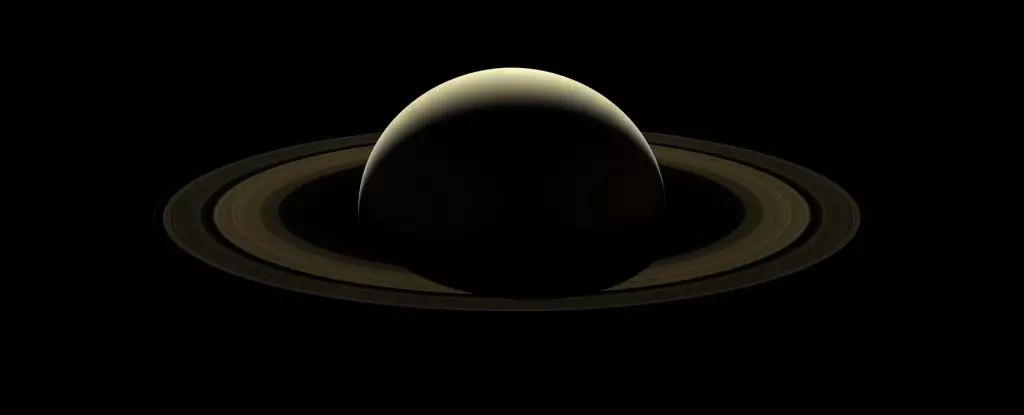Recent research has revealed a fascinating discovery about the ringed planet, Saturn. Scientists have uncovered a significant, seasonal energy imbalance across Saturn’s globe, marking a pivotal moment in our knowledge of weather patterns and climate on gas giant planets. This newfound information has the potential to reshape our understanding of planetary science and atmospheric dynamics.
Traditionally, our understanding of planetary energy balance has been based on the assumption that gas giant planets, like Saturn, have a stable equilibrium. However, in analyzing Cassini data, researchers observed that Saturn experiences fluctuations in the amount of energy it absorbs and emits, with differences of up to 16 percent. These variations align with the planet’s seasons and are influenced by its elliptical orbit around the Sun. As Saturn moves closer to the Sun, it receives more radiant energy, leading to a seasonal energy imbalance.
This newfound understanding of Saturn’s energy dynamics has far-reaching implications for planetary science. It challenges existing models and theories that assume a balanced global energy budget for gas giant planets. The seasonal energy imbalance on Saturn may be driving the formation of massive convective storms within its atmosphere, a phenomenon that was previously unrecognized. Similar processes may also be at play on other gas giants like Jupiter, where the eccentricity of its orbit could lead to comparable energy differentials.
Understanding the seasonal energy imbalance on Saturn can also provide valuable insights into Earth’s climate system. While Earth experiences a significantly smaller energy imbalance due to its more circular orbit, studying Saturn’s extreme fluctuations can help us comprehend the subtleties of planetary weather patterns. Additionally, this research suggests that other gas giants like Neptune and Uranus may exhibit similar energy imbalances, offering a new avenue for exploration in planetary science.
The discovery of Saturn’s seasonal energy imbalance opens up new possibilities for future planetary missions. By reevaluating current observations and developing testable hypotheses based on this groundbreaking research, scientists can pave the way for future exploration of gas giants and deepen our understanding of their atmospheric dynamics. This unexpected twist in Saturn’s energy dynamics serves as a reminder of the boundless mysteries that our solar system continues to unveil.


Leave a Reply